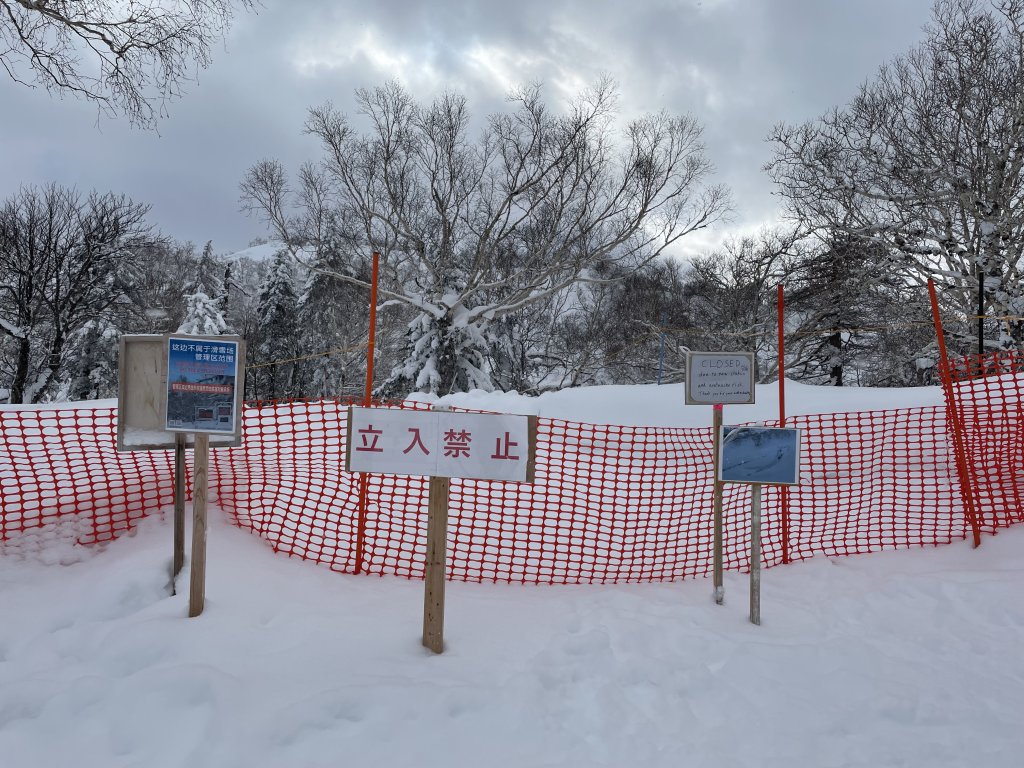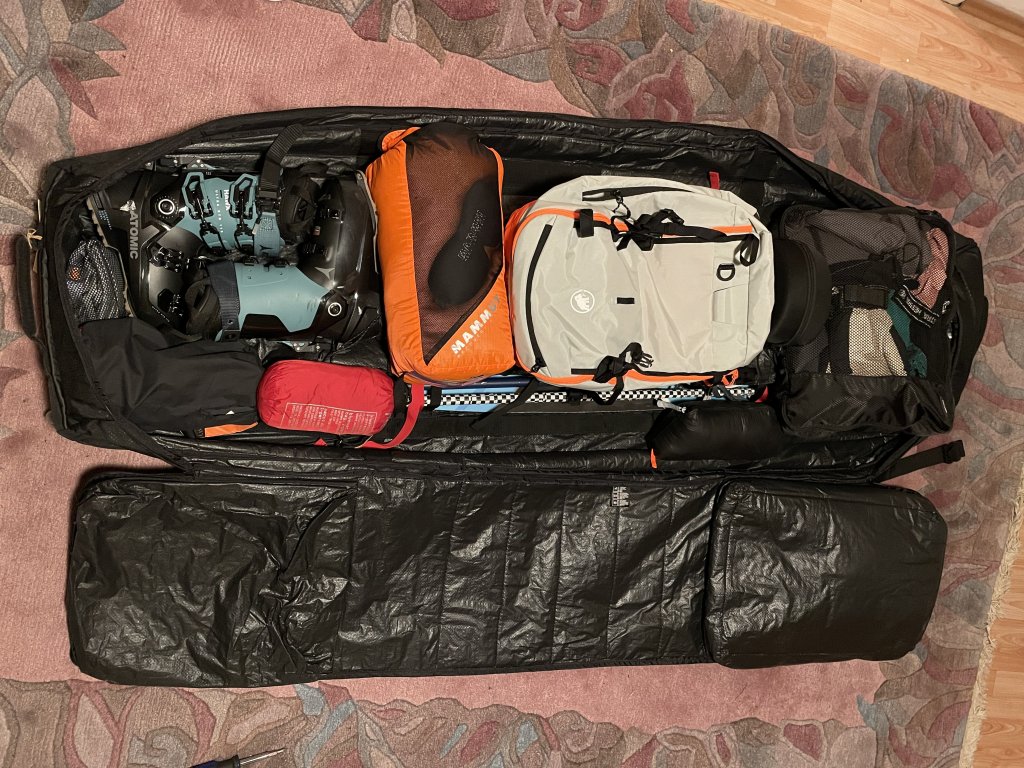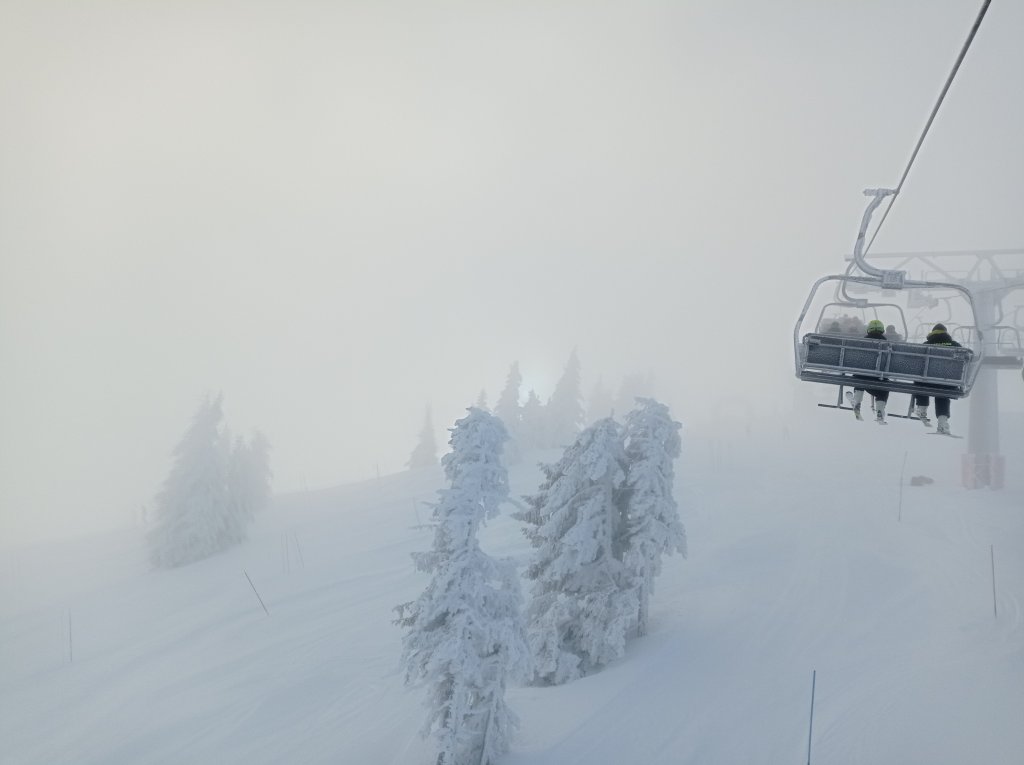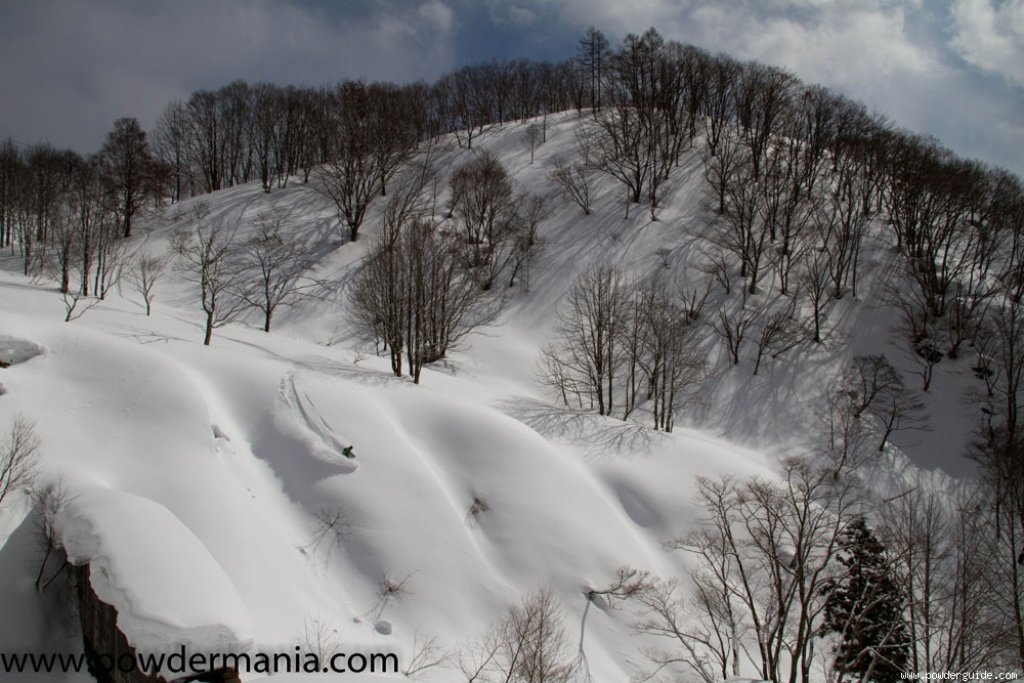Backcountry vs. sidecountry
What we simply call freeriding in the Alps is more precisely differentiated in Japan. Jojo and I work for an agency that offers guided tours for off-piste skiing as well as ski and snowboard lessons. At first, the different terms for freeriding were a bit confusing for me.
A distinction is primarily made between sidecountry and backcountry. The former refers to off-piste skiing directly adjacent to ski areas. The official ski area is left via "gates". These are numbered and indicate a clear exit from the secured pistes. Said gates can be open or closed and indicate that leaving the secured pistes is only permitted with avalanche equipment. If they are closed, it is strictly forbidden to leave the groomed terrain. The Snow Patrol also checks this from time to time, and anyone who is spotted in forbidden terrain may be met at the end of the route by a not-so-pleased reception committee dressed in dark blue with a yellow cross on their jacket...
Backcountry, on the other hand, describes freeriding in areas that go beyond the sidecountry and where skins are used. You go to the limits of the ski area with the help of lifts or even completely without lift support and leave the prepared terrain to venture into more remote terrain. As far as I know, the Snow Patrol is not interested in what you do there. In my opinion, the transitions between backcountry and sidecountry are fluid and in the end, nobody really knows exactly what they are doing. But the terminology did cause some confusion at the beginning.
Snow Patrol and avalanche warning services
Another difference to freeriding in the Alps is that there is no proper mountain rescue service here. There is a snow patrol, but they often consist of lift staff or the police. In the event of an accident, there is therefore no mountain rescue service with a helicopter, but local guides are usually sent out to rescue the injured. The weather conditions rarely allow a helicopter to be flown. Moreover, there is supposedly only one helicopter for this purpose and it is based in Niseko, a 4-hour drive from Furano. Incidentally, costs for any rescues and recoveries outside the ski resort must be borne by the skier.
There is also no avalanche warning service here in Japan, comparable to our forecast system in the Alps. It is therefore advisable to keep an eye on the meteorological conditions and snow developments throughout the season, regularly digging snow profiles and keep up to date with other freeriders and guides. In this way, the community creates its own local report. In Furano, there is an avalanche education gathering once a week where you can exchange information. If you are unsure, you should go on guided tours with experts from the region to familiarise yourself with the area. Hokkaido is also not particularly known for sunny days. It snows almost every day at some point. Fantastic! But just as often you'll find yourself in a whiteout and can expect visibility to be low. When it does clear up, you should therefore memorise your surroundings well and make a note of all visible landmarks.
This season there is a pronounced "bamboo problem" on Hokkaido. Just as a lot of snow on warm meadow slopes in the Alps can lead to sliding snow problems, the bamboo here also forms a sliding surface when it is flattened by the amount of snow in warm temperatures. This was the case this autumn and since then 1, 2 or 3 metres of snow have been sliding down the slope at a leisurely pace. This creates pockets of sliding snow that open up like deep furrows. At some point, the sliding snow avalanches come off as a whole. This is particularly critical in spring, but sliding snow can also come loose at any time without warning, as you can read again and again in the avalanche reports in the Alps this season. What's more, the deep cracks scare you and you certainly don't want to fall in! Crevasse rescue sets might not be out of place here.
Finally, I'll come to a few organisational things and check the packing list:











